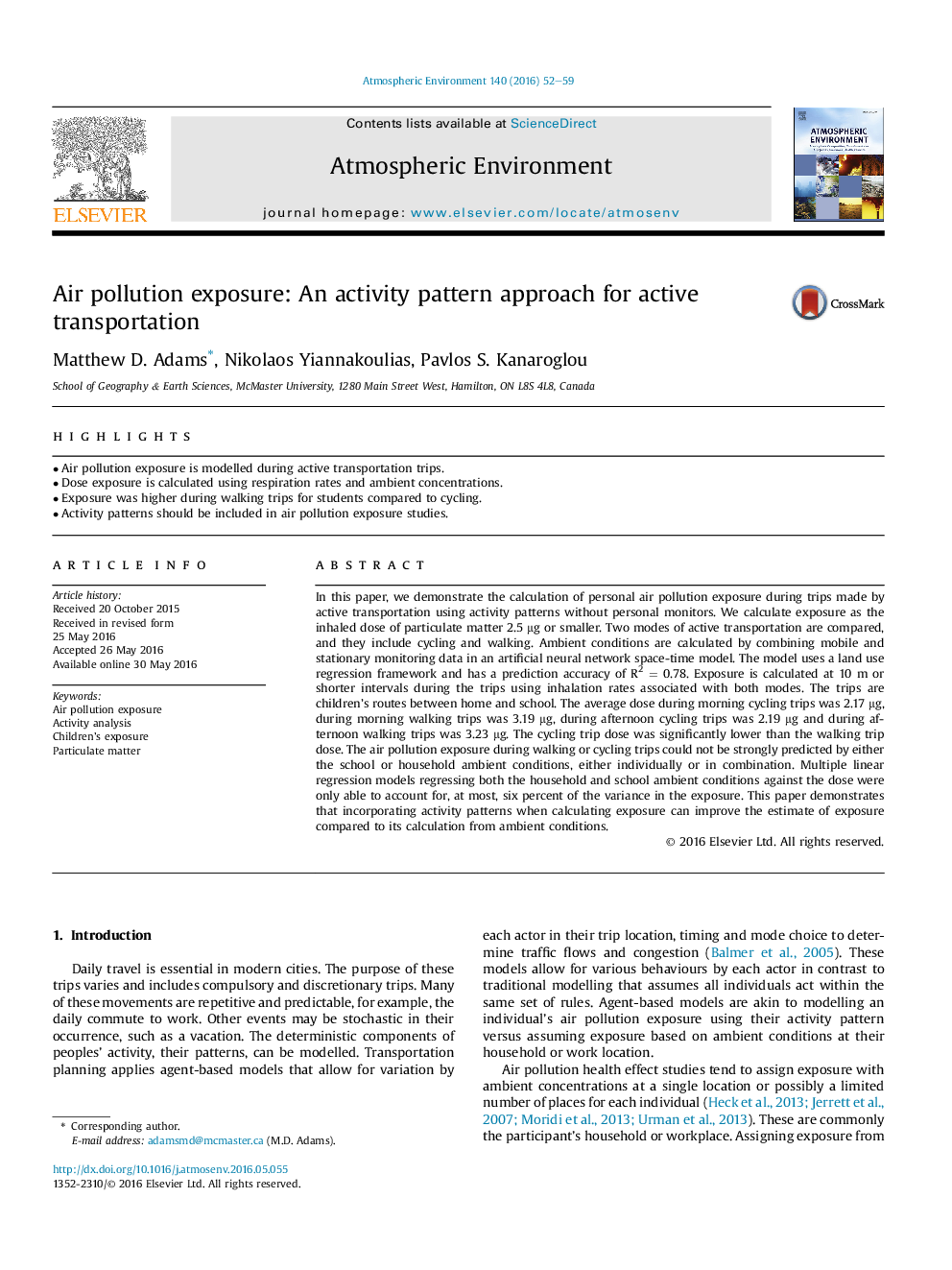| Article ID | Journal | Published Year | Pages | File Type |
|---|---|---|---|---|
| 6336142 | Atmospheric Environment | 2016 | 8 Pages |
â¢Air pollution exposure is modelled during active transportation trips.â¢Dose exposure is calculated using respiration rates and ambient concentrations.â¢Exposure was higher during walking trips for students compared to cycling.â¢Activity patterns should be included in air pollution exposure studies.
In this paper, we demonstrate the calculation of personal air pollution exposure during trips made by active transportation using activity patterns without personal monitors. We calculate exposure as the inhaled dose of particulate matter 2.5 μg or smaller. Two modes of active transportation are compared, and they include cycling and walking. Ambient conditions are calculated by combining mobile and stationary monitoring data in an artificial neural network space-time model. The model uses a land use regression framework and has a prediction accuracy of R2 = 0.78. Exposure is calculated at 10 m or shorter intervals during the trips using inhalation rates associated with both modes. The trips are children's routes between home and school. The average dose during morning cycling trips was 2.17 μg, during morning walking trips was 3.19 μg, during afternoon cycling trips was 2.19 μg and during afternoon walking trips was 3.23 μg. The cycling trip dose was significantly lower than the walking trip dose. The air pollution exposure during walking or cycling trips could not be strongly predicted by either the school or household ambient conditions, either individually or in combination. Multiple linear regression models regressing both the household and school ambient conditions against the dose were only able to account for, at most, six percent of the variance in the exposure. This paper demonstrates that incorporating activity patterns when calculating exposure can improve the estimate of exposure compared to its calculation from ambient conditions.
